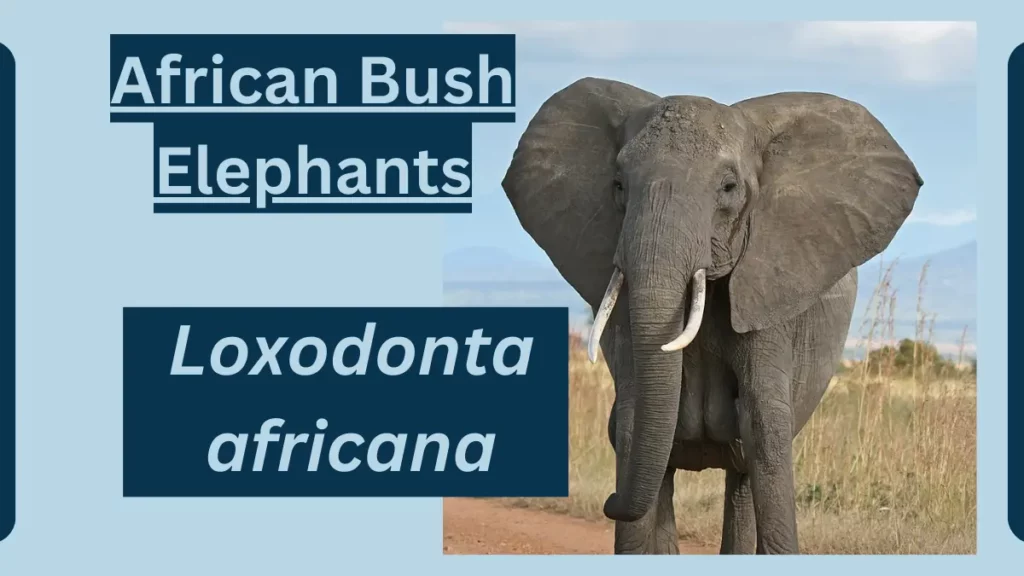African Bush Elephant Animal Facts
October 13, 2023
African bush elephants (Loxodonta africana) are the largest land animals on Earth. They are also one of the most intelligent and social animals.
African bush elephants live in herds of up to 100 individuals, led by a matriarch. The matriarch is the oldest and most experienced female in the herd. She is responsible for leading the herd to food and water, and for protecting them from predators.

Also read: African Civet Animal Facts
African Bush Elephant
Here are some facts about African Bush Elephants:
| Topic | Information |
| Scientific Classification | – Kingdom: Animalia |
| – Phylum: Chordata | |
| – Class: Mammalia | |
| – Order: Proboscidea | |
| – Family: Elephantidae | |
| – Genus: Loxodonta | |
| – Species: Loxodontaafricana | |
| Origins and Evolution | African Bush Elephants are native to various regions of Africa. They are one of the largest and oldest terrestrial mammals, with a rich evolutionary history. |
| Characteristics | Mammal’s Anatomy and Appearance: African Bush Elephants are known for their massive size, large ears, and long, curved tusks. They have grayish to brownish skin, often wrinkled. |
| Size: They are the largest land animals, with males reaching heights of 10 to 13 feet (3 to 4 meters) at the shoulder and weighing up to 12,000 pounds (5,400 kilograms). | |
| Distribution and Habitat | They inhabit a wide range of ecosystems across sub-Saharan Africa, including savannas, forests, and grasslands. They are highly adaptable to various habitats. |
| Behavior and Lifestyle | African Bush Elephants are social animals that live in matriarchal groups led by an older female. They are herbivores, with a diet primarily consisting of plants and vegetation. |
| Reproduction and Life Cycles | Females have a lengthy gestation period of approximately 22 months, and they typically give birth to a single calf. Calves are cared for by the entire herd. |
| Diet and Prey | They are herbivores, consuming a variety of plant materials, including grasses, leaves, bark, and fruits. They can eat hundreds of pounds of vegetation in a day. |
| Predators and Threats | Adult African Bush Elephants have few natural predators, but young calves may be vulnerable to lions and crocodiles. Their main threats are habitat loss and poaching for ivory. |
| Interesting Facts and Features | Communication: They use a variety of vocalizations, body language, and infrasound (low-frequency sounds) for communication within their social groups. |
| Ivory Tusks: Their tusks are made of ivory and have made them a target for illegal poaching. This has led to significant conservation efforts to protect them. | |
| Relationship with Humans | African Bush Elephants have a complex relationship with humans. They are revered in many African cultures but have also faced significant threats from hunting and habitat loss. |
| Conservation Status and Life Today | African Bush Elephants are classified as vulnerable due to habitat loss and poaching for ivory. Conservation efforts, including anti-poaching measures and protected areas, aim to safeguard their populations. |
Also Read:
File Under:







Leave a Reply